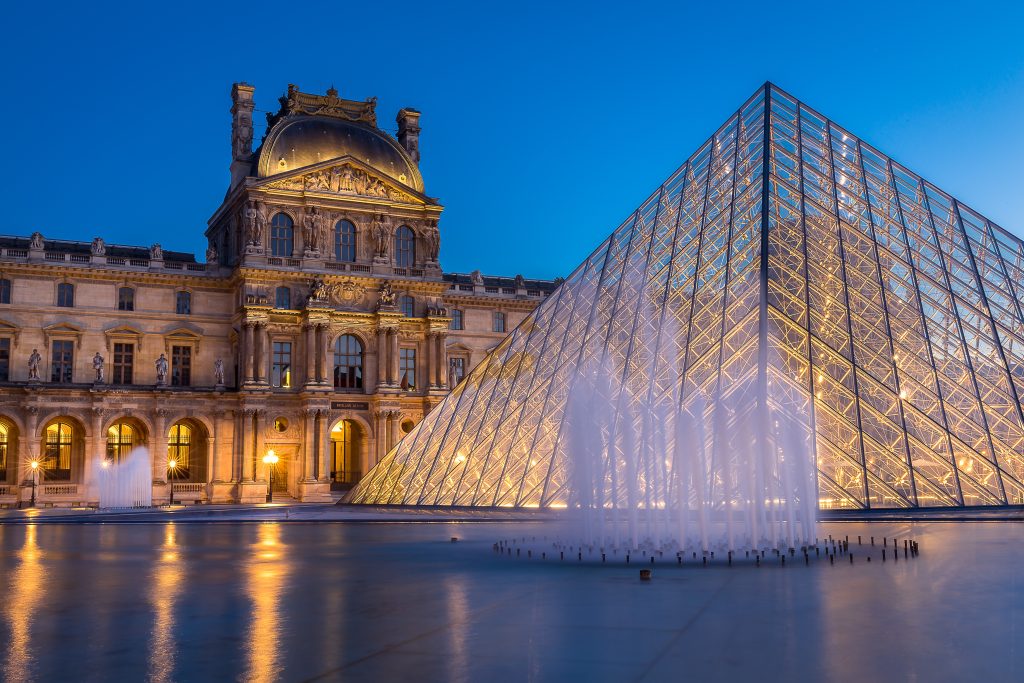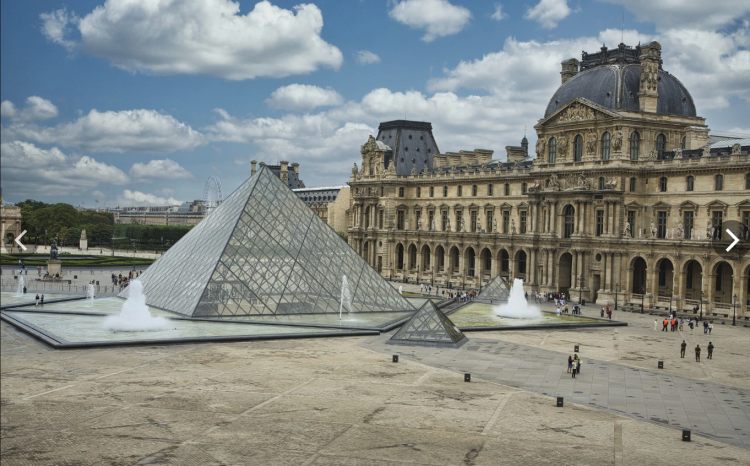In the heart of Paris, France, there is a palace proudly standing, it is not only a symbol of the French monarchy, but also a treasure of the world’s art. This Palace is the world-famous Louvre Palace. The historical background of the Louvre, its architectural features and the cultural values it carries together constitute its unique charm, attracting tourists and art lovers from all over the world.
Historical background: The witness of royal power and the cradle of art
The history of the Louvre dates back to the 12th century when it was built as a defensive castle on the banks of the Seine by King Philip II of France. Over time, the castle was gradually expanded and became the residence of the French royal family. During the reign of Francis I (1515-1547), the Louvre began to show its beginnings as a palace of art. The king, who loved art and culture, brought many masterpieces of the Italian Renaissance to France and housed them in the Louvre.
It was later Kings, notably Louis XIV (1661-1715), who really made the Louvre a world-class art museum. During his reign, he not only moved the court to Versailles, but also transformed the Louvre into an art museum open to the public. This move made the Louvre no longer just a symbol of royal power, but also a cradle and popularizer of art.
Second, architectural features: the perfect integration of classical and modern
The architectural style of the Louvre is a typical combination of French classicism and Baroque style. Its main building has a symmetrical layout, with a facade consisting of a three-storey main building and two-storey flanks, with a huge courtyard in the centre. This symmetrical layout not only makes the palace more visually stable and solemn, but also reflects the absolute and inviolable power of the French crown.
The exterior wall of the palace is mainly white, with gold decoration, which appears both noble and elegant. The roof is carved with exquisite stone carvings and balustrades, and every detail reveals the craftsman’s exquisite skills and pursuit of beauty. The interior of the palace was even more lavish, with the halls, banquets, meeting rooms and private residences filled with precious works of art, tapestries, frescoes and furniture.

It is worth mentioning that the architecture of the Louvre is not static. Throughout its history, it has undergone several expansions and renovations. Each expansion and renovation incorporated the most popular architectural styles and elements of the time, making the Louvre gradually develop into a magnificent building with both classical and modern beauty. This ever-changing architectural character also makes the Louvre a living architectural history book.
Cultural value: The ocean of art and the witness of history
The Louvre is not just a building, it is a sea of art and a witness to history. The palace houses more than 35,000 works of art, including paintings, sculptures, porcelain, furniture and more, each of which tells a different story of history and culture.
In terms of paintings, the Louvre has one of the richest collections in the world. Masterpieces from the Italian Renaissance, such as Da Vinci’s Mona Lisa and Raphael’s Madonna and Child, to native French masters such as Ingres and Delacroix, have found their home here. These paintings not only show the artistic styles of different periods, but also reflect the historical and cultural background of the society at that time.
In terms of sculpture, the Louvre is also not to be underestimated. From the masterpieces of ancient Greece and Rome, such as the Goddess of Victory of Samothras and Venus de Milo, to the masterpieces of the French Baroque period, such as Apollo and Daphne by Pujet, each sculpture attracts the attention of the audience with its unique shape and profound connotation.
In addition to paintings and sculptures, the Louvre also has a large collection of art and cultural relics, such as ancient Egyptian sculptures, medieval weapons and armor, Eastern porcelain and so on. These collections not only demonstrate the diversity of human civilization, but also reflect the Louvre’s unique status as a world-class art museum.
- Journey of Discovery: Enter the art world of the Louvre
Walking into the Louvre is like entering a world of art. Every corner, every painting, every sculpture exudes a unique charm that makes people linger.
Denon Wing: This is the largest exhibition hall in the Louvre and the place with the largest collection of paintings. Here, you can see masterpieces from the Italian Renaissance, such as Botticelli’s “Springtime” and “Birth of Venus,” as well as works by French masters, such as Ingres’s “La Grande Maid” and Delacroix’s “Liberty Leads the People.” These paintings not only show the artistic styles of different periods, but also reflect the historical and cultural background of the society at that time.
Sully Wing: This pavilion is a collection of French medieval and Renaissance sculpture. Here you can admire masterpieces of ancient Greek and Roman sculpture, such as the Goddess of Victory of Samothras and Laokong, as well as masterpieces of native French sculpture, such as Pooj’s Apollo and Daphne. These sculptures attract the attention of the audience with their unique shapes and profound connotations.
Richelieu Wing: This exhibition hall mainly collects ancient Oriental art and artifacts, such as ancient Egyptian sculpture, Chinese porcelain and Japanese lacquer. These collections demonstrate the diversity of human civilization and the Louvre’s unique status as a world-class art museum.
In addition to these main galleries, the Louvre also has many other galleries and special exhibitions, such as the Impressionist Gallery, the Gallery of ancient artifacts, and so on. Each exhibition hall has its own unique charm and story waiting for you to explore and discover.
Modern role: disseminator of art and culture
In today’s society, the Louvre is not only a historical relic and a palace of art, but also a living disseminator of culture and art. Every year, the Louvre hosts a variety of art exhibitions and cultural events, attracting tourists and art lovers from all over the world.

The Louvre also actively uses modern technology to combine art and technology to bring a new artistic experience to the audience. For example, through virtual reality technology, viewers can “walk” into the Louvre at home and appreciate the precious works of art; Through digital technology, the Louvre has also digitized its collections, making these precious cultural heritage accessible to more people online.
The Louvre is also committed to art education and cultural exchange. It regularly holds various art lectures and seminars to provide young people with opportunities for artistic enlightenment and education; At the same time, it also cooperates with museums and art institutions in other countries and regions to jointly promote the development of world art and culture.
Conclusion: Louvre, the eternal palace of art
The Louvre, an art palace located in Paris, France, not only carries rich historical and cultural connotations, but also attracts tourists and art lovers from all over the world with its unique architectural style and rich art collections. Here, you can feel the charm of art, the richness of history and the diversity of culture.
Whether you are an art lover or a history buff, the Louvre will provide you with an unforgettable art journey. More than a palace, it is a living history and art textbook. Here, you can travel through time and space and have a dialogue with the masters of art in history. You can feel the collision and integration of different cultures and experience the breadth and depth of human civilization.
If you haven’t been to the Louvre yet, plan your trip now! This eternal art palace is waiting for your arrival, it will welcome you in the most enthusiastic way, and show you a full of charm and surprise of the art world.





















